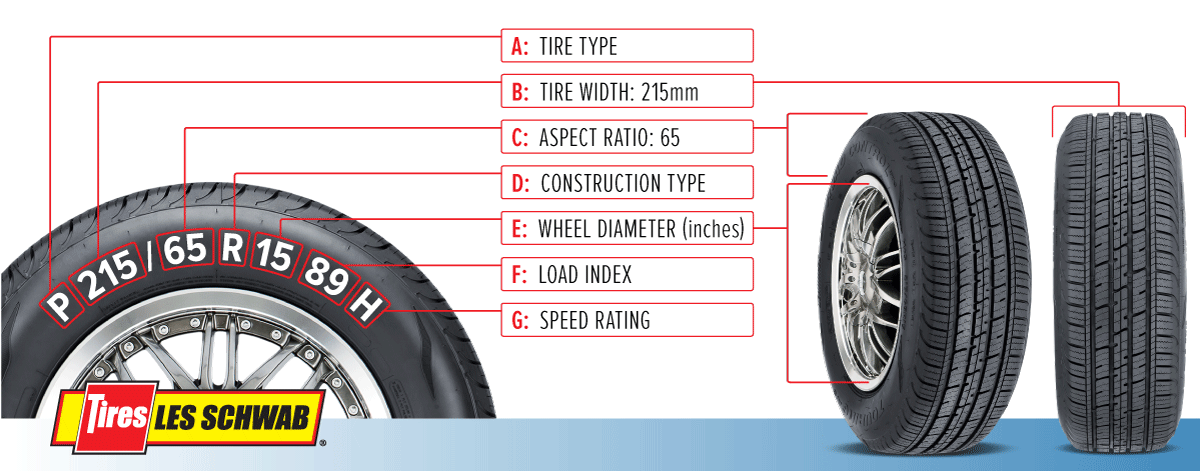Tires
What would you say if you had to describe your tires in a few words? You might say something like, “They’re black, grooved, rubbery, and round.” While you’re certainly right, you’re missing some key information—and it’s printed right on the tire! Find out what your tire numbers mean so you can make the best, most informed decisions about your tire and car care.
For the purpose of this piece, let’s pretend we’re looking at a tire with 215/65 R15 printed on its sidewall. What do the numbers on this tire mean?
“215” in this sequence refers to the tire’s width in millimeters . In other words, this tire is 215 millimeters wide, from sidewall to sidewall.
“65” in the sequence is the aspect ratio of the tire. The aspect ratio is a percentage, and it tells you the ratio of the tire’s height to its width. In this example, the aspect ratio number “65” means that the tire’s height is 65 percent of its width.
The “R” in this sequence refers to the construction of this tire. Specifically, the “R” means that the layers run radially across the tire. The majority of tires on the road today are radial tires, in which the internal layers are perpendicular to the axis of rotation (and the direction of travel).
The other letter you might see here is a “D,” which denotes a tire that has a diagonal or bias ply construction. These tires have plies that are laid out in a diagonal, or crosshatch, pattern.
The very last number in the sequence, “15,” is the diameter of the tire. This is an important number—this is the number you’ll refer to when you need to know your tire size! The “15” indicates that this particular tire would fit a rim with a 15-inch diameter.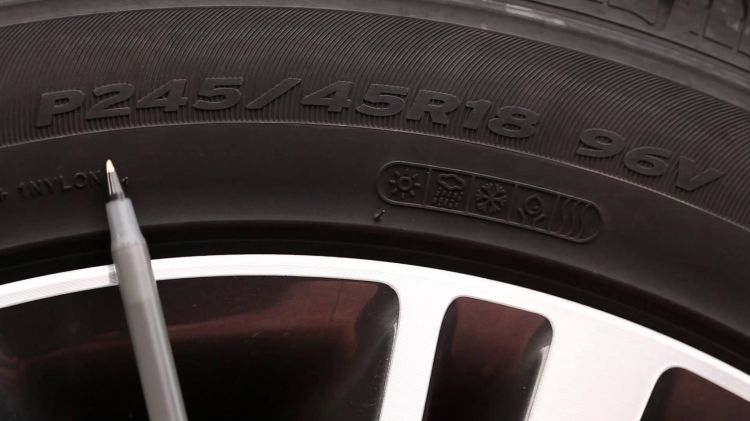
Now that you know how to read numbers on tires, you'll be able to describe your tires with much more knowledge and accuracy than, “black, grooved, rubbery, and round.” Check out our latest tire deals and head to your nearest Firestone Complete Auto Care to chat it up with people who speak tire, too! Our technicians are here for everything you need, from tire repair to tread depth checks.
Schedule
Tires
Aug 22, 2016
Tread wear, your tires exposure to the elements, and tire age may all be contributing factors to your needing new tires. Read on to learn how to tell.
Read More
Tires
Aug 22, 2016
Firestone tires create a whole new driving experience.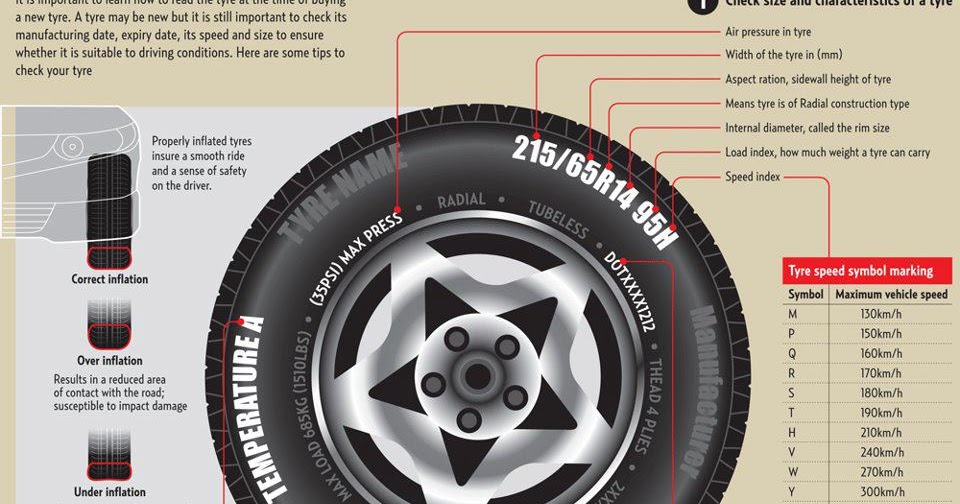 Learn about the technology of our tires that improves driving on straightaways and handling ability.
Learn about the technology of our tires that improves driving on straightaways and handling ability.
Read More
Tires
Aug 22, 2016
Tires are an investment & you want them to last. Here are some tire care tips to help you get the most out of your tires & info on our free inspection
Read More
LOAD 3 MORE
SHOWING 6 OF 12
Tires
Feb 12, 2018
Wondering when to replace tires? You don't need any fancy tools. Learn how to check tire tread depth with the tire penny test, with help from the pros at Firestone Complete Auto Care. It's quick, easy, and one of the best ways to ensure your safety on the road.
Read More
Tires
Jan 14, 2018
Wondering how to choose tires? Let us simplify the process into a handful of easy-to-follow steps, from Firestone Complete Auto Care.
Read More
Tires
Jan 10, 2018
Do you need to switch all of your tires to winter tires, or will two do just fine? Get the answer, from the tire pros at Firestone Complete Auto Care!
Read More
Tire size can be confusing. Some numbers on the sidewall are listed in millimeters while others are inches. Plus, the right size for your car, truck, or trailer can differ depending on where and how you drive.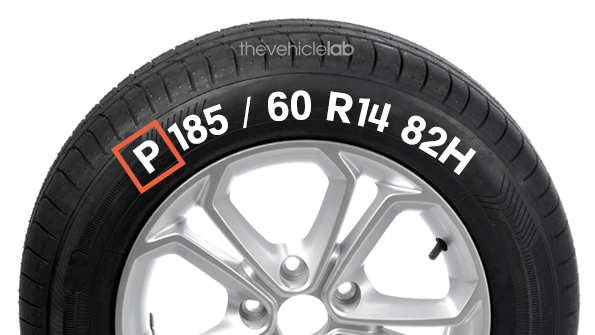
You can see your original equipment tire size in your owner’s manual or on the placard generally located on the driver’s side door jam. This is the sizing recommended by the vehicle manufacturer.
If you’re interested in switching out your tires for a different look or performance, a good place to start is the numbers and other indicators on your existing tires’ sidewall. Next, have a tire professional help you determine a tire size range that will fit your vehicle and driving needs.
Here’s what those numbers and indicators on the sidewall indicate and how to understand them:
A: TIRE TYPE The first letter in the code tells you what class of tire it is.
P stands for passenger vehicle tire. P-class tires include cars, SUVs, crossovers, minivans and smaller pickup trucks.
LT means light truck tire, designed for vehicles that are capable of carrying heavy loads, towing trailers, or for those looking for an extra heavy duty option. These are often equipped on three-quarter or 1 ton trucks and SUVs.
These are often equipped on three-quarter or 1 ton trucks and SUVs.
ST stands for Special Trailer. These tire sizes are meant for trailers, including fifth wheels and other travel trailers, as well as boat and utility trailers.
If there’s no letter before the first number, you have a metric tire most commonly referred to as European size. It’s also measured in millimeters but may have a different load capacity than a P or LT tire.
B: TIRE WIDTH The three-digit number following the letter is the tire’s width (from side to side, looking at the tire head on) in millimeters. This may also be referred to as the section width.
C: ASPECT RATIO The forward slash separates the tire width number from the two-digit aspect ratio. The bigger the aspect ratio, the higher/taller the tire’s sidewall, or “profile” as it’s sometimes called.
The aspect ratio is indicated on the tire sidewall as a percentage. It’s the height of the sidewall measured from wheel rim to top of the tread, expressed as a percentage of tire width.
In this example, the aspect ratio is 65, meaning the sidewall is 65 percent as high as the tire is wide. To get the sidewall height, take the tire width of 215 mm and convert it to inches (8.46). Then multiply this by 65% (.65). This gives you an answer of 5.5, the sidewall height in inches.
D: CONSTRUCTION TYPE This single letter tells you about the internal construction of the tire.
R is for radial tires, the industry standard for most tires today. They have better road grip, lower rolling resistance for better gas mileage, ride comfort and durability than previous generations of tires. In a radial tire, the plies — layers of strong cords made of a blend of polyester, steel and fabric and coated with rubber — are laid perpendicular to the direction of travel.
D is for tires built with diagonal (crisscrossed) plies, called bias-constructed tires. They are also called conventional, x-ply, or cross-ply tires.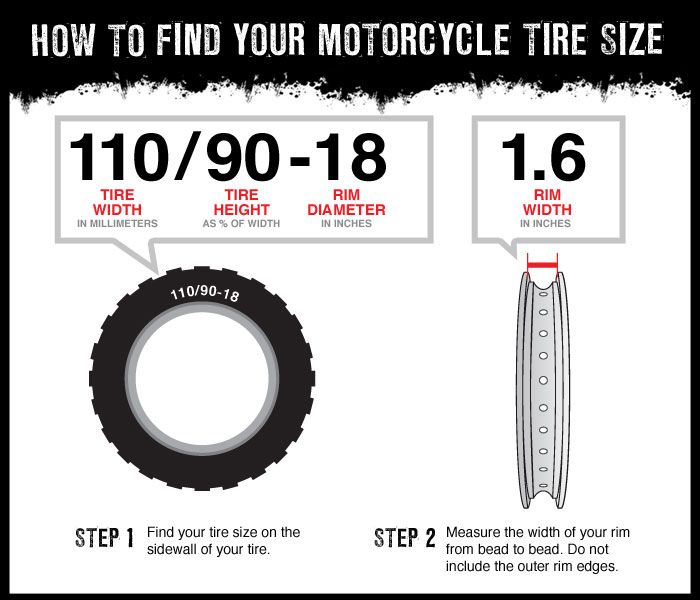 Some motorcycle and trailer tires still use this internal construction.
Some motorcycle and trailer tires still use this internal construction.
Some run-flat tires are identified with an F followed by the type of internal construction.
E: WHEEL DIAMETER This two-digit number specifies wheel diameter in inches. It’s the distance between the two bead seat areas (where a tire gets tightly sealed onto the wheel).
F: LOAD INDEX The two-digit or three-digit number that follows the gap specifies tire load index. The load index symbol indicates how much weight a tire can support, based on the following standard chart. In our example, the load index is 89, which indicates the tire has a load capacity of 1,279 pounds, when inflated to the tire’s maximum air pressure rating.
G: SPEED RATING The last letter is the tire speed rating. This indicates the top speed it’s safe to travel at for a sustained amount of time. A tire with a higher speed rating can handle heat better and provide more control at faster speeds.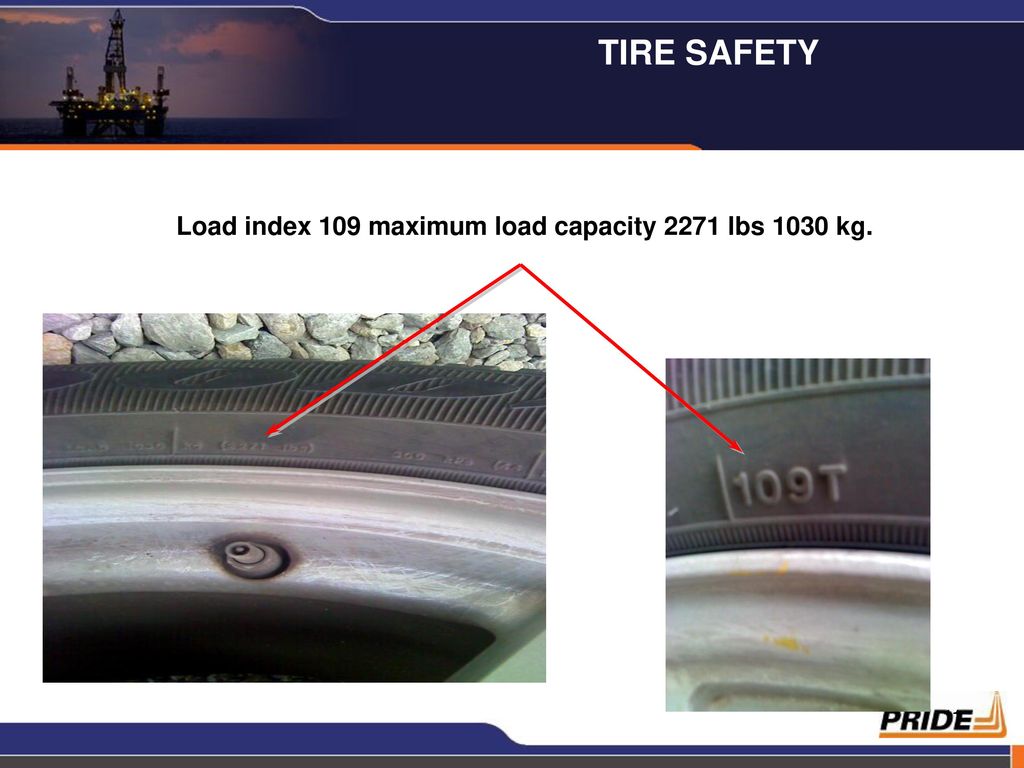 The maximum operating speed of a vehicle is no more than the lowest speed rating of all tires mounted on the vehicle. (Of course, you should always abide by speed limits for safer driving.) Speed rating is usually, but not always, a single letter (see the chart).
The maximum operating speed of a vehicle is no more than the lowest speed rating of all tires mounted on the vehicle. (Of course, you should always abide by speed limits for safer driving.) Speed rating is usually, but not always, a single letter (see the chart).
Below you will find several charts that will help you understand tire sizing numbers, including a load index chart and speed rating chart.
A tire size calculator is a quick way to see whether the tire size you’re considering will likely fit your car, SUV, sports car, light truck or crossover.
But remember that is only an estimate. It’s important to stay within the sizing tolerances of your vehicle. Tires that are the wrong size could cause some pull in the steering wheel, rub against the suspension or body of your vehicle, reduce clearance on hills, or result in a stiffer or noisier ride.
If you’re considering mounting a different tire size on your vehicle, check with a tire expert.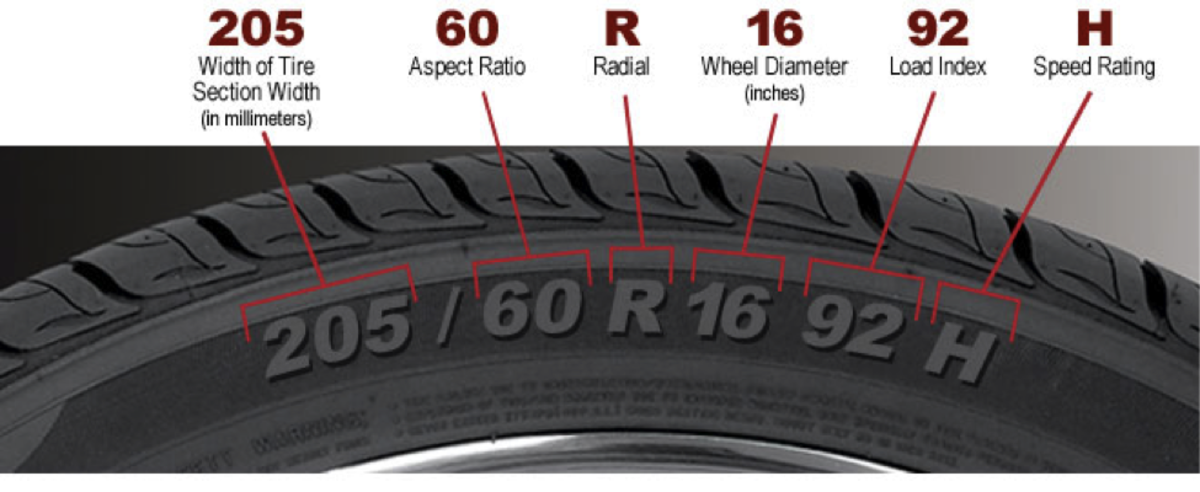 Find out whether the tires and wheels you have your eye on are the right fit for your vehicle’s suspension, gearing, and bodywork. And ask how any differences in revolutions per mile, tire speed, load index, and speed rating will affect your ride quality and vehicle performance.
Find out whether the tires and wheels you have your eye on are the right fit for your vehicle’s suspension, gearing, and bodywork. And ask how any differences in revolutions per mile, tire speed, load index, and speed rating will affect your ride quality and vehicle performance.
See how new tires and rims will look on your car or truck using our Virtual Wheels simulator, available at any Les Schwab.
Find Your Store
A lot depends on the right choice of shoes for a car. When deciding to buy a kit, you can be guided by various comparative tests. However, it is worth remembering that their characteristics must correspond to the operating conditions. In this case, the information indicated in the marking on the sidewall of the tire will help. Such inscriptions on the tire indicate the size of the product and its technological characteristics. Below we will decipher the symbols and try to figure out what the numbers and letters in the rubber marking mean.
Content:
Obligatory designations and markings of tires are mandatory.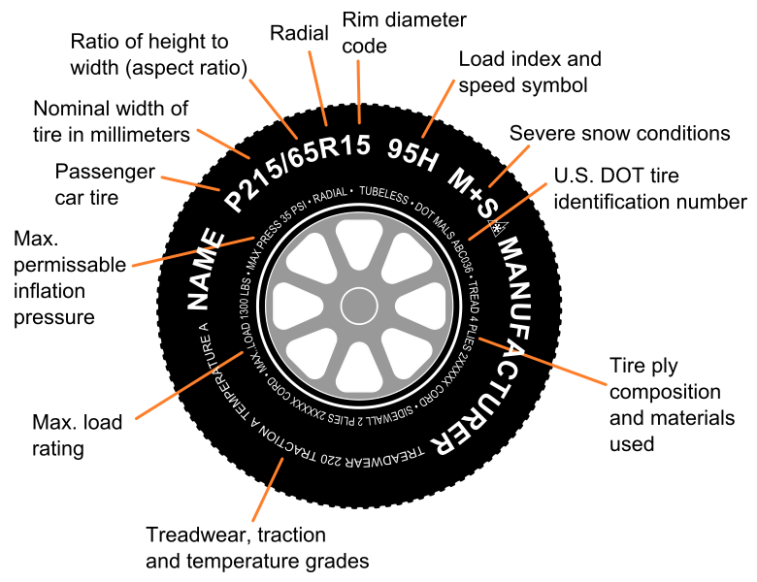 So, on each tire, the manufacturer, the brand of the rubber itself and the size of the tires will be indicated. The designation of three numbers on the tires indicates the dimension of the wheel in inches, the width of the rubber and the height of the profile. The numbers are on the outside.
So, on each tire, the manufacturer, the brand of the rubber itself and the size of the tires will be indicated. The designation of three numbers on the tires indicates the dimension of the wheel in inches, the width of the rubber and the height of the profile. The numbers are on the outside.
We have a wheel with parameters such as 195 60 R16. This means that we have rubber in front of us, with a tread width of 195 mm. The second number is the ratio of the picture's height to width. The larger this parameter, the more “hooky” the rubber will be. This value is usually referred to as the profile index.
The third number is the inner diameter of the tire in inches. In general, a common mistake is that motorists purchase wheels without paying attention to some data on changes in external parameters. For example, size 185 65 r15 will differ in height from 210 65 r15 with the same bore diameter. The ratio of the profile to the width in our case can interfere with the installation of tires on the car.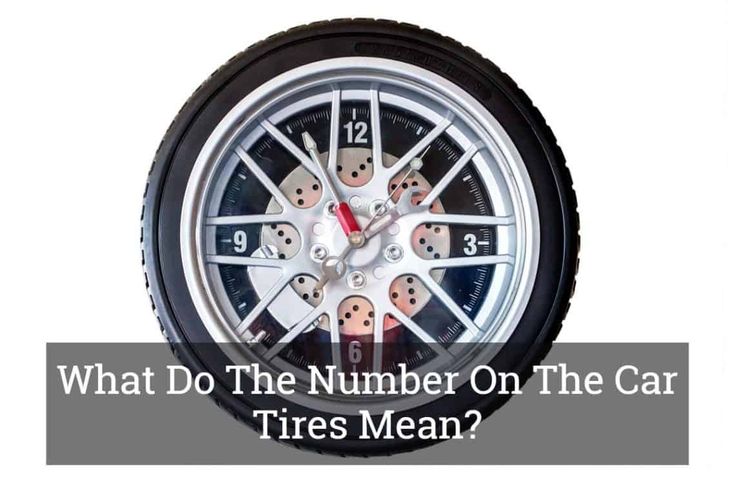 This factor should be understood and taken into account. And a special calculator will help you correctly calculate the size of the tires.
This factor should be understood and taken into account. And a special calculator will help you correctly calculate the size of the tires.
Tire manufacturers also supply all tires with a speed index without fail. This sign can be found immediately after the wheel size indicator. It tells you how fast you can travel on the roads. A table that deciphers the speed index of passenger car tires will help to read this sign correctly.
| Tire speed classification | |||||||||
|---|---|---|---|---|---|---|---|---|---|
| Designation | N | P | Q | R | TU | HV | |||
| Speed | 140 | 150 | 160 | 170 | 180 | 1 | 200084 | 210 | 240 |
Immediately after the speed index on the tires of the car there is an index of the permissible load on each wheel. For example, tire marking contains an indicator of 88t. This indicates that the machine can travel at a maximum speed of 190 km / h, and the maximum allowable load on each wheel is 560 kg.
For example, tire marking contains an indicator of 88t. This indicates that the machine can travel at a maximum speed of 190 km / h, and the maximum allowable load on each wheel is 560 kg.
Certain tires may be marked with the letters XL or the words Reinforced. This marking is usually awarded to tires, the load index of which is higher than standard values. If the number 88 is written on the sidewall of an xl or extra load tire, then 3 should be added to the value. decipher this indicator as 91 or 615 kg per wheel.
| Number | load in kg one wheel for cars |
|---|---|
| 60-70 | 250-335 |
| 71-80 | 345-450 |
| 81-90 | 462-600 |
| 91-100 | 615-800 |
| 101-110 | 825-1060 |
| 111-120 | 1090-1400 |
| 121-129 | 1450-1850 |
American tire manufacturers resort to a different tire marking. The first one is very similar to the European one, only before the dimension there are additional letters P - passenger, LT - light truck or T - truck. For example, 185 r14c P means that this is a wheel with a tread width of 185 mm, a diameter of 14 inches and designed for passenger cars.
The second classification system for its products is quite different. If the European system measures the dimensions of car tires in millimeters, then the American system measures in inches. However, it is quite easy to understand. For example, there are numbers on tires 27*11*r15. The first number is the outside diameter of the tire, the second number is the tread width, and the last number is the inside diameter.
To facilitate the mounting of wheels on rims, manufacturers sometimes equip additional color marks that carry their own information. How to decipher such icons - below.
How to decipher such icons - below.
Occasionally, a yellow dot or triangle can be found on tires that indicates the lightest spot on the tyre. When mounting, it is necessary to align the mark with the heaviest part of the disc to facilitate balancing.
Additional tire parameters include red circle or triangle symbols that can be found on the sidewall of the rubber. This is the designation of the most rigid place of the tire wall. It must be aligned with the “L” mark on the disc.
A white stamp with a number located on the outer sidewall bears information about the inspector who carried out the final "acceptance" of the goods.
Some tires have radial colored stripes. They help to identify tires of certain brands in the store, quickly look for them in the warehouse. Sometimes the color of the strip indicates the date of issue or the country of manufacture, and also indicates the passage of a run-in.
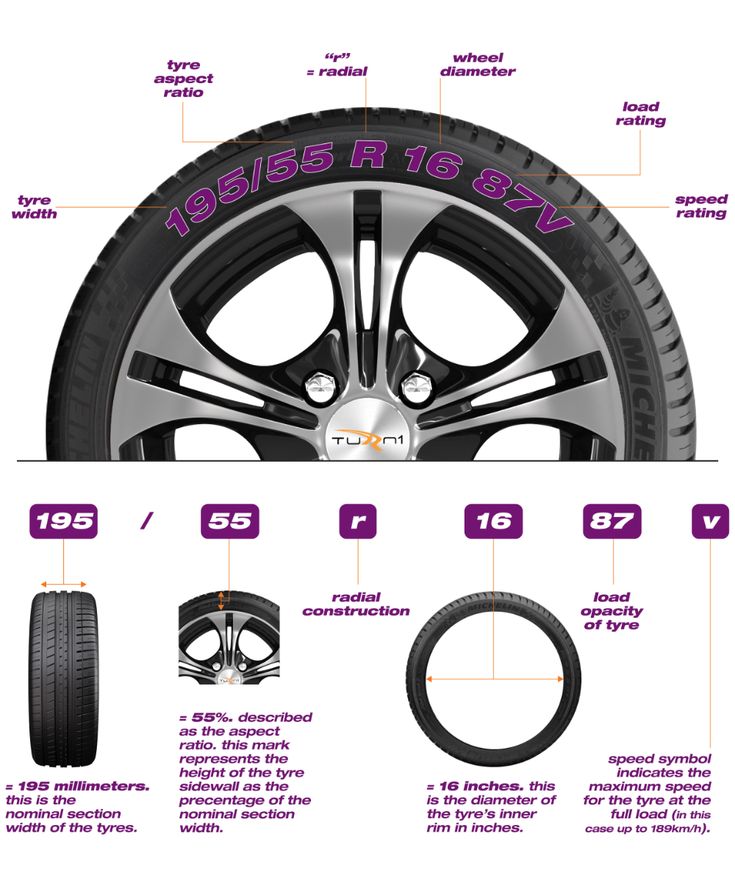
Many passenger tires have additional markings in addition to the designation of the model and type of tread:
 The wheels must rotate in the direction indicated by the arrow;
The wheels must rotate in the direction indicated by the arrow;
It is also worth understanding what the seasonal badges on the wheels mean.
Next to the place of the wheel size there are four more digits indicating the date of manufacture of the kit. Reading it is quite simple if you understand the calendar. The first two digits are the serial number of the week, and the second are the year of production. That is, the number 4215 indicates that the kit was produced on the 42nd week of 2015.
Reading it is quite simple if you understand the calendar. The first two digits are the serial number of the week, and the second are the year of production. That is, the number 4215 indicates that the kit was produced on the 42nd week of 2015.
Car news > Tires >
What do the numbers and symbols on car tires mean?
When choosing car tires, it is not enough to pay attention to cost and appearance; you should carefully study what is written on the side of the tire. The first thing you should pay attention to is the dimension.
click on picture to enlarge
For example, the designation 195/65 R15 says that the width of the tire is 195mm, tire profile height 65% of the tire width and R15 is the mounting diameter in inches.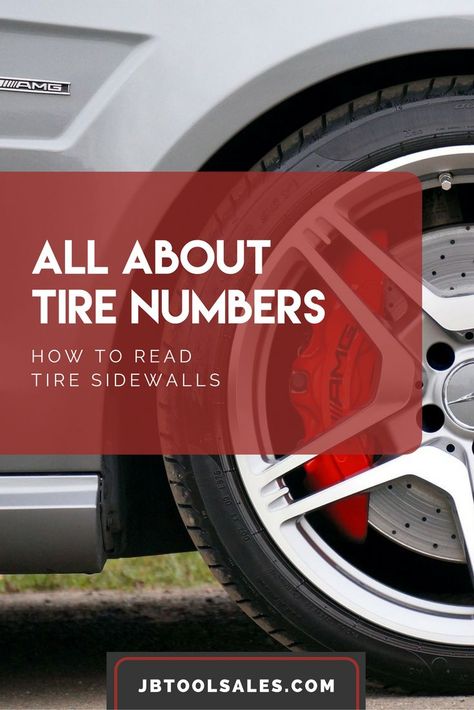 This is followed by marking speed index and maximum load index . The tables below will help you decipher these meanings.
This is followed by marking speed index and maximum load index . The tables below will help you decipher these meanings.
Maximum load index table.
Maximum speed indices
For example, the designation 91T informs us that the maximum speed of for this tire must not exceed 190 km / h, and also that the maximum load of is not more than 615 kg. Try not to experiment with tire sizes, it is not for nothing that the manufacturer recommends certain sizes. After all, it is on them that the maximum running characteristics of your car are achieved. When beading a tire, be sure to take into account the direction of rotation, usually indicated by a stylized arrow.
Different types of indication of the direction of rotation
On winter tires there will be the sign of a snowflake against the background of a mountain, as well as the letters M + S , M stands for “mud”, S for snow
Perhaps the most important and inconspicuous designation is tire release date . The designation is applied in the format "35.11", which means that the tire was released in the 35th week of 2011. Make sure that the tire is not older than two years, because the life of the tire is five years, then it loses its properties.
The designation is applied in the format "35.11", which means that the tire was released in the 35th week of 2011. Make sure that the tire is not older than two years, because the life of the tire is five years, then it loses its properties.
The rest of the information carries the manufacturer's coding and information for tire fitters. For example, colored circles and triangles on a tire. True, our tire fitters do not particularly pay attention to these designations. Modern balancing technology allows you to accurately balance the wheel. You should not pay special attention to these signs.
Balancing marks
Technology labels
Red indicates the heaviest part of the tyre, yellow the lightest, and white the thinnest part of the sidewall. Longitudinal color stripes on the tread , contrary to popular belief, indicate the type of rubber compound blank. Such marking is used only to ensure that at the production stage, workers do not mix up the blanks of future tires.